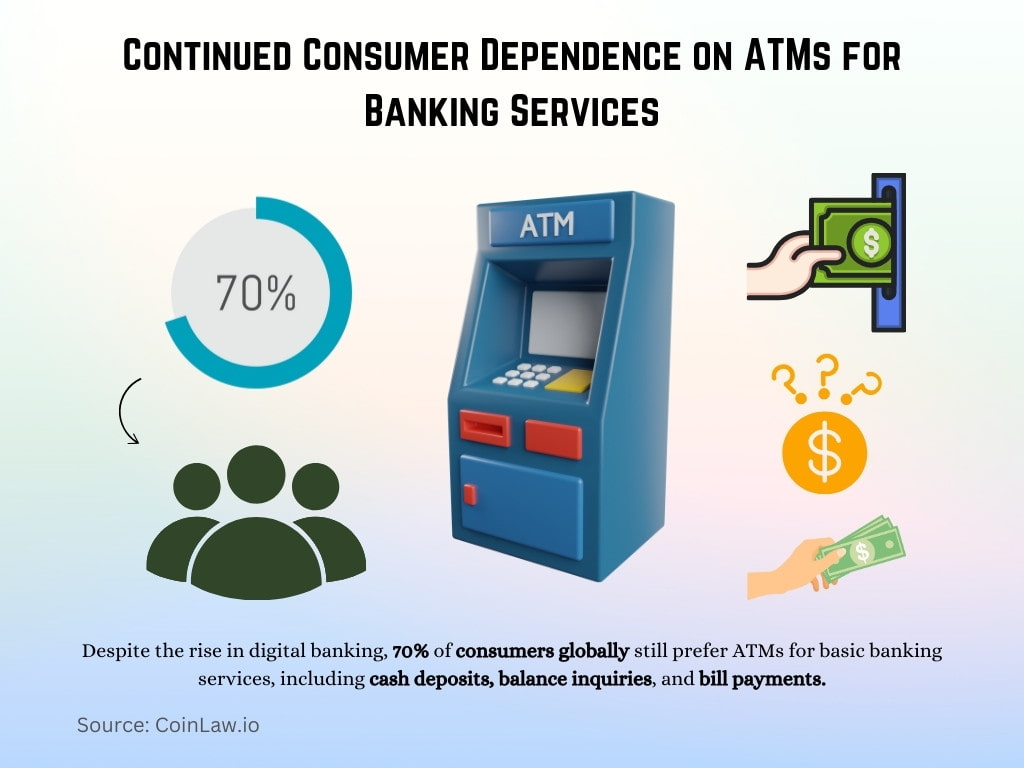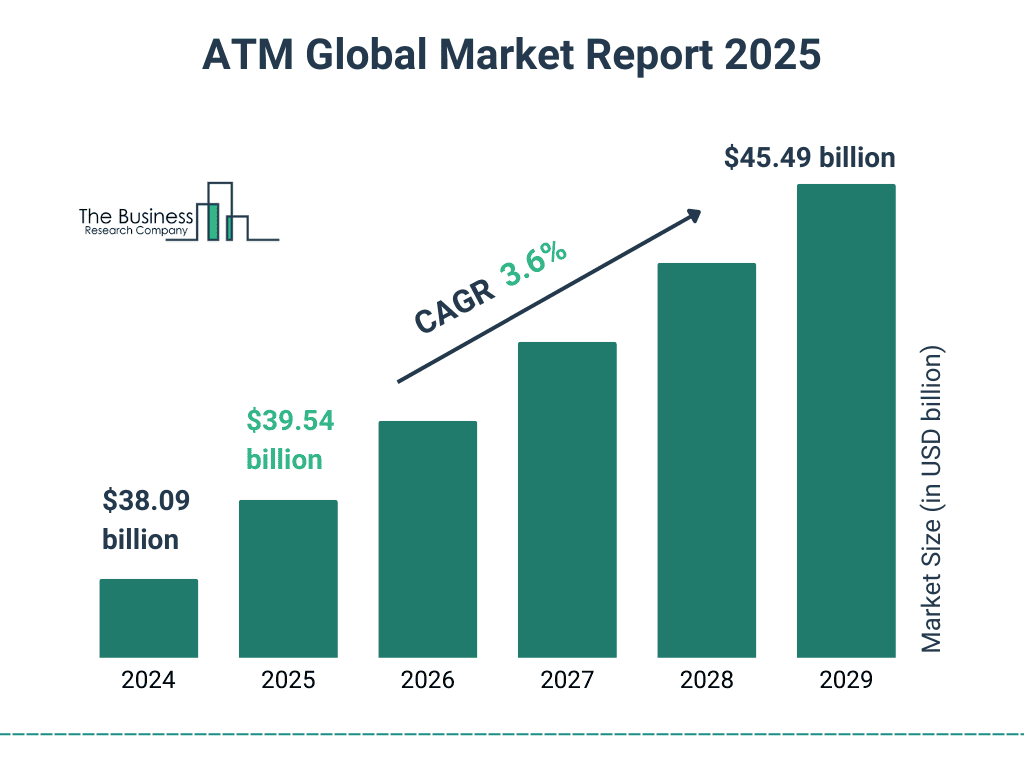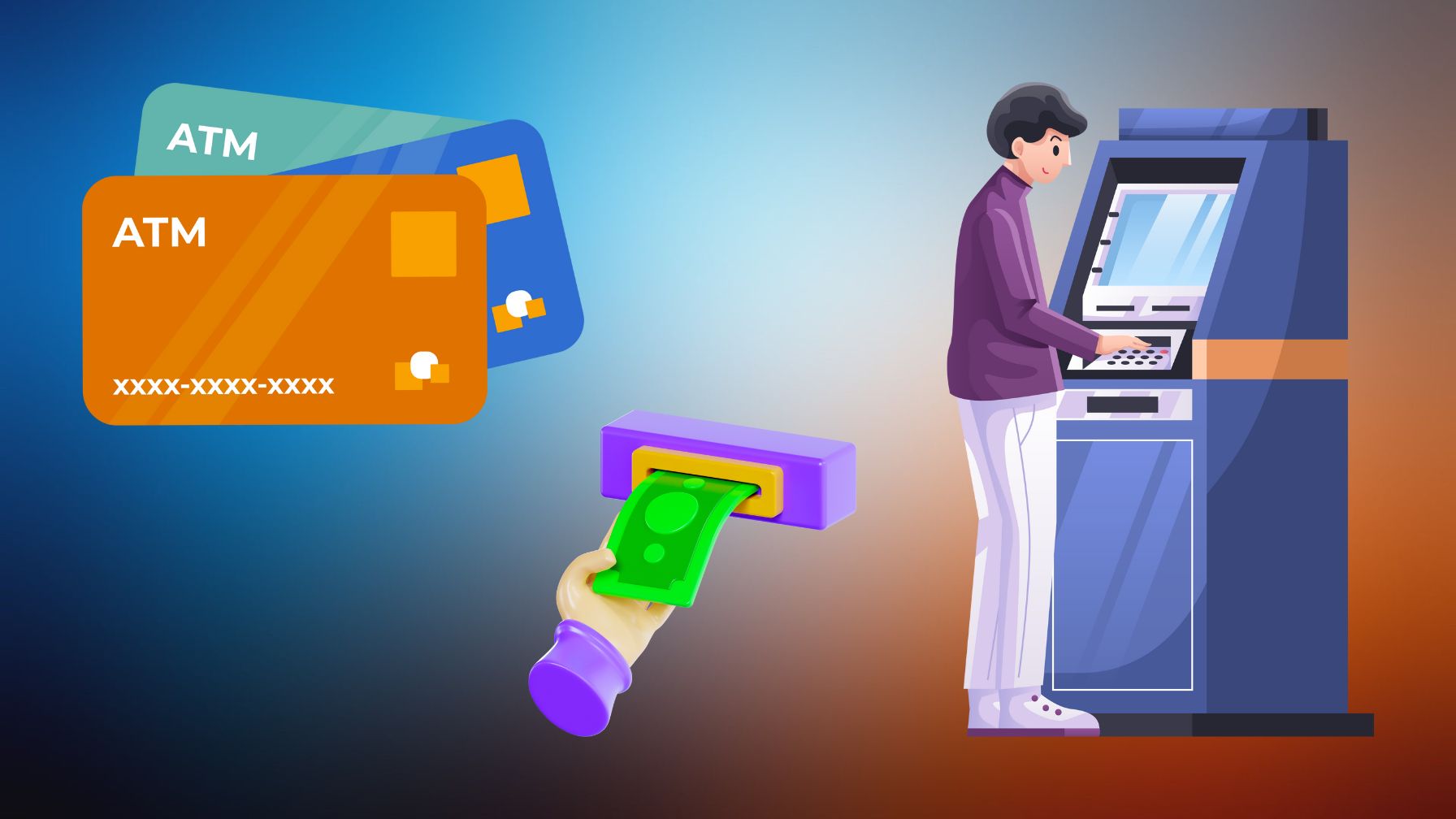In today’s rapidly evolving digital world, Automated Teller Machines (ATMs) continue to play a crucial role in financial services. Despite the surge in digital payments and the adoption of cashless transactions, ATMs remain an essential component of the global banking infrastructure. Whether you’re in a bustling city or a remote town, chances are you’ll find an ATM nearby, offering a vital touchpoint for accessing cash and other banking services. But how has ATM usage evolved in the face of digital advancements? Let’s dive into the latest ATM statistics for 2025 to explore global trends, market size, and the pivotal role these machines still play in our financial ecosystem.
Editor’s Choice: Key Global Trends in ATM Usage
- Global ATM installations declined by 1.8% in 2025 as digital payment adoption intensified across both developed and emerging markets.
- Over $13.6 trillion was processed in ATM cash withdrawals in 2025, reaffirming the persistent demand for physical currency.
- The Asia-Pacific region accounted for 51.2% of global ATM deployments in 2025, led by growth in India and Indonesia.
- In developing economies, 84% of consumer transactions in 2025 still relied on physical cash.
- Western Europe saw a 7.5% drop in ATM usage in 2025 due to the continued growth of mobile and online banking.
- 30% of global ATMs supported cardless mobile withdrawals in 2025, up from 20% the previous year.
- Contactless ATM transactions surged by 19% in 2025, reflecting a sustained shift toward speed and hygiene-focused convenience.
ATM Market Size & Trends
- The global ATM market reached $20.3 billion in 2025, reflecting modest growth amid declining machine counts.
- The total number of ATMs fell to 2.95 million in 2025, due to consolidation by banks.
- ATM outsourcing services grew by 13.2% in 2025, fueled by demand for cost-efficient third-party operations.
- The smart ATM segment is expanding at a 5.8% CAGR (2025–2029) with the rising adoption of video and biometric features.
- Cryptocurrency-enabled ATMs exceeded 39,000 installations globally in 2025, driven by mainstream crypto adoption.
- The United States held 80.1% of global crypto ATMs in 2025, maintaining dominance despite international growth.
- Despite the rise in digital banking, 70% of consumers globally still prefer ATMs for basic banking services, including cash deposits, balance inquiries, and bill payments.

General ATM Statistics and Trends
- There are approximately 2.91 million ATMs globally in 2025, marking a 1.4% decrease from the previous year due to digital-first banking.
- Global ATM transaction volume reached 86.7 billion in 2025, showing a slight decline as cash access remains relevant.
- The average withdrawal per ATM transaction rose to $157 in 2025, up 3.3%, as users reduce ATM visits.
- In the United States, 88% of households used an ATM in 2025, highlighting the persistent need for cash access points.
- Nearly 64% of banks worldwide adopted cash recycling ATMs in 2025, optimizing cash handling efficiency.
- ATM fraud losses declined to $1.5 billion in 2025, though skimming remains the most reported method despite security upgrades.
- ATM usage among seniors rose by 16.5% over five years as of 2025, driven by enhanced accessibility and user-friendly features.
ATM Market Size Forecast
- The global ATM market is projected to grow to $45.49 billion by 2029.
- In 2025, the market is expected to reach $39.54 billion, continuing a steady upward trend.
- The market is forecasted to grow at a CAGR of 3.6% over the period.
This reflects a consistent rise in global demand and usage of ATMs despite increasing digital transactions.

Regional Insights
- Asia-Pacific leads the world in total ATM installations, with over 1.4 million machines in operation, comprising 50% of the global total.
- In North America, ATM installations are expected to decline by 5%, with banks focusing on consolidating ATM networks in favor of digital solutions.
- Latin America saw a 7% increase in ATM transactions, driven by economic instability and a preference for cash in countries like Brazil and Argentina.
- In Europe, Germany stands out with a significant reliance on cash, where 75% of point-of-sale transactions are still conducted using cash, despite the rise of digital payment solutions.
- Africa is projected to see a 10% growth in ATM deployments, as financial inclusion efforts expand access to banking in rural regions.
- Middle Eastern countries like Saudi Arabia and the UAE are seeing a surge in ATM usage despite heavy investment in digital payments, with cash withdrawals increasing by 8%.
- India continues to maintain one of the largest ATM networks, with over 250,000 machines, and saw a 6% rise in ATM withdrawals, largely due to the country’s ongoing push toward financial inclusion.

Solution Insights
- 16% of ATMs globally in 2025 will now support biometric authentication, such as fingerprint or facial recognition.
- ATM as a Service (ATMaaS) grew by 16.4% in 2025, enabling smaller banks to reduce infrastructure costs and enhance ATM uptime.
- Mobile-enabled ATMs accounted for 30% of global machines in 2025.
- Solar-powered ATMs expanded by 18% in 2025, particularly in rural Africa and South Asia, improving off-grid banking access.
- Blockchain-powered ATMs added 6,100 new installations in 2025, driven by the rising use of crypto withdrawals and deposits.
- Smart ATMs with video teller services are growing 7.2% CAGR through 2029, streamlining remote customer support.
- Contactless ATM installations reached 42% of all new ATMs in 2025, meeting the demand for NFC-based hygienic access.
Global ATM Services Market Share by Type
- Onsite ATMs dominate the market, accounting for approximately 50% of the global ATM services share. These are typically located within bank branches.
- Offsite ATMs hold an estimated 30% share, serving customers in high-footfall areas like malls, airports, and convenience stores.
- Worksite ATMs make up about 13%, placed within business premises to provide employee convenience.
- Mobile ATMs contribute the smallest share at around 7%, but play a crucial role in rural or event-based deployments.

ATM Usage and Cash Withdrawal Trends
- 58% of global consumer transactions in 2025 will still involve cash, reinforcing the ongoing relevance of ATM networks.
- Cardless ATM transactions rose by 17.8% in 2025, driven by the ease of mobile banking withdrawals without physical cards.
- Contactless ATM withdrawals increased by 19.4% in 2025, with widespread NFC adoption in North America and Europe.
- Cryptocurrency ATMs processed over $1.4 billion in transactions in 2025, with user growth exceeding 35% year-over-year.
- ATM visits dropped by 11.2% in 2025, but users made larger withdrawals per visit, favoring convenience over frequency.
- 87% of ATM transactions in 2025 occurred outside traditional banking hours, reflecting rising demand for 24/7 cash access.
- In India and Brazil, 73% of the population used ATMs monthly in 2025, showing strong dependence on basic banking access.
Global ATM Market Outlook
- The global ATM market is projected to grow at a CAGR of 4.6% from 2025 to 2029, indicating accelerating momentum.
- The market will see an incremental growth of $6.19 billion during this period.
- APAC will contribute 62% of the total growth, making it the largest regional driver.
- The growth forecast for 2025 alone is 4.2%, highlighting continued annual expansion.
The industry is described as fragmented, with several market players competing globally.

Impact of Digital Payment Systems on ATM Usage
- ATM usage declined by 5.7% in 2025 across major economies like the US, UK, and Germany due to the growth of mobile payments.
- Peer-to-peer platforms like Venmo and Zelle reduced ATM visits by 22% among Gen Z in 2025, replacing routine cash withdrawals.
- Contactless payments led to a 10.8% drop in cash withdrawals in developed countries in 2025, driven by platforms like Apple Pay.
- QR code-based payments rose by 19.5% globally in 2025, further reducing ATM reliance in urban regions.
- In Sweden, ATM usage fell by 82% over the past decade 2025, with 99% of transactions now cashless.
- CBDC pilots expanded to 18 countries in 2025, accelerating the global shift away from physical cash and ATMs.
- In Africa, over 89% of consumer transactions in 2025 will still use cash, keeping ATMs essential in underserved regions.
ATM Security and Fraud Prevention Trends
- Global ATM fraud losses reached $2.05 billion in 2025, showing a slight decline due to strengthened countermeasures.
- Skimming attacks accounted for 77% of ATM fraud cases in 2025, though EMV chip adoption continues to reduce risk in many regions.
- Biometric security is now deployed in 18% of ATMs worldwide in 2025, helping curb unauthorized access attempts.
- End-to-end encryption is present in 68% of new ATM installations in 2025, becoming a critical layer in consumer data protection.
- Remote monitoring systems helped reduce fraud losses by 11.3% in 2025, enabling real-time detection and rapid response.
- Anti-skimming devices are installed in 87% of European ATMs in 2025, contributing to a notable drop in fraud incidents.
- AI-driven fraud detection cut ATM fraud by 16.1% globally in 2025, with machine learning improving anomaly detection accuracy.

Recent Developments in the ATM Industry
- Modular ATMs from NCR and Diebold Nixdorf reduced downtime by 32% in 2025, streamlining maintenance and upgrade cycles.
- Video-enabled ATM deployments rose by 13.6% in 2025, enhancing remote teller access and personalized service.
- Self-service kiosks in retail locations grew by 8.4% globally in 2025, expanding convenient cash withdrawal options.
- Bitcoin and crypto ATMs added 10,800 new installations worldwide in 2025, driven by increasing digital currency usage.
- Eco-friendly ATMs with solar power made up 22% of new deployments in 2025, supporting sustainable access in remote regions.
- ATM recycling programs repurposed 34% of decommissioned machines in 2025, advancing the industry’s sustainability goals.
- Hybrid ATMs accounted for 26.5% of the global market in 2025, integrating cash, digital, and crypto transaction capabilities.
Conclusion
The ATM industry remains an essential part of the global financial landscape, even as digital payment systems and cashless transactions grow in prominence. ATMs continue to evolve, integrating new technologies such as biometrics, cryptocurrency access, and contactless transactions, which enhance security and convenience. While ATM installations may decline in developed regions, the demand for cash services in emerging markets and the growing adoption of smart ATMs indicate that the industry is far from obsolete. As we look to the future, ATMs will continue to bridge the gap between traditional banking and modern, digital-first solutions.
Hover or focus to see the definition of the term.


























































